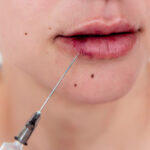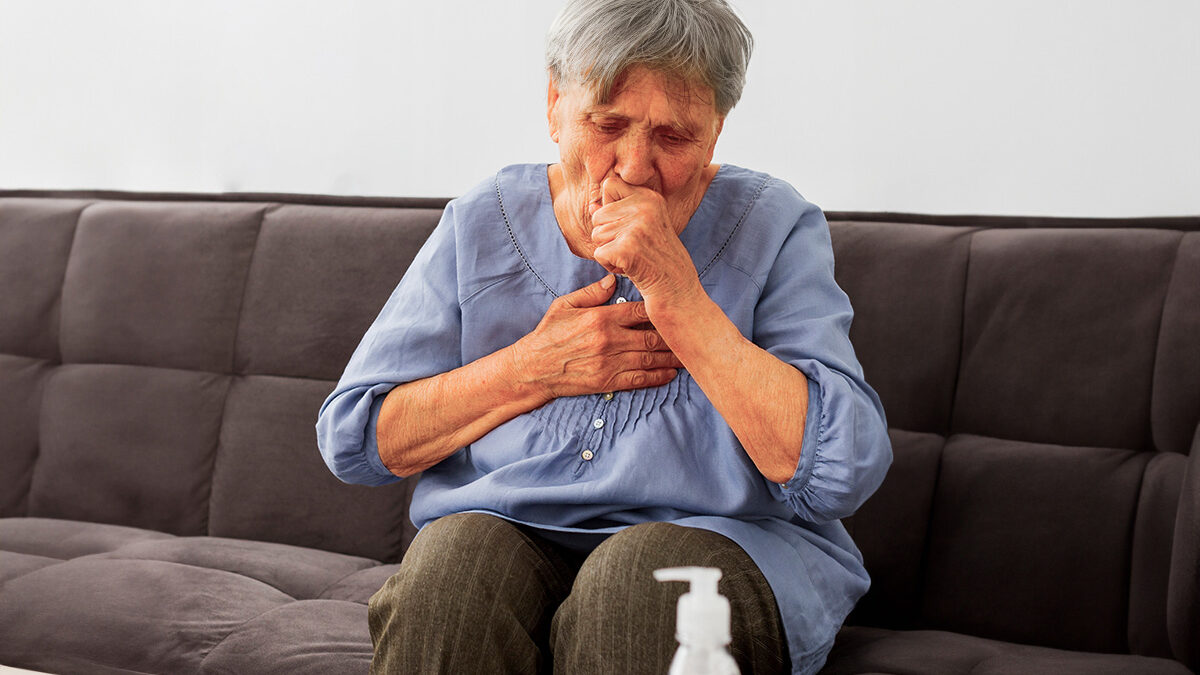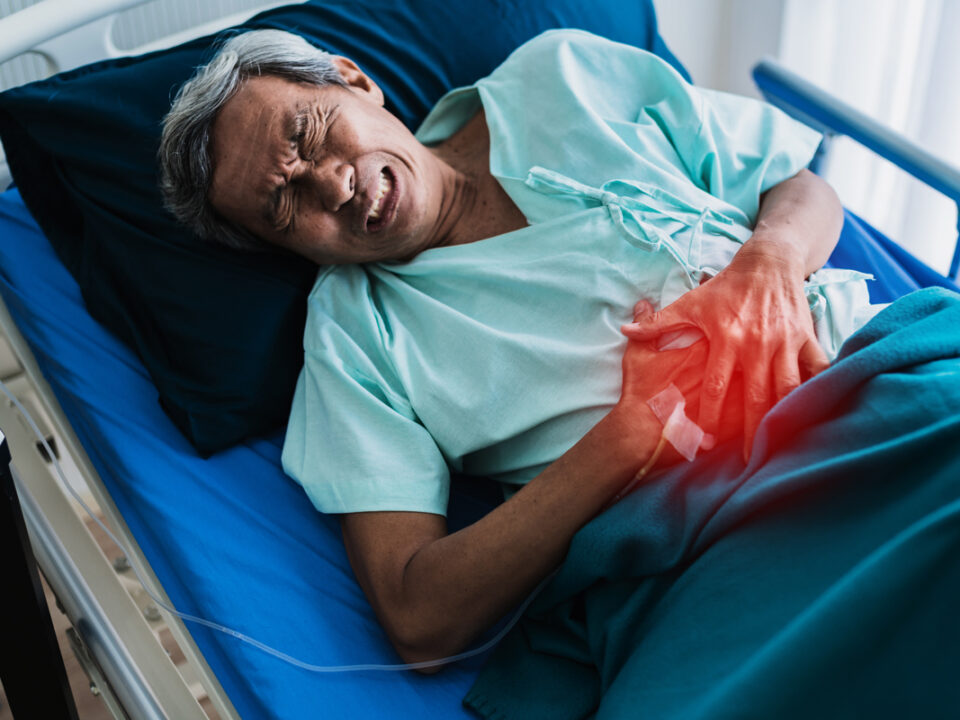
Hyperbaric Oxygen Therapy for Stroke Patients: How Does It Work?
09/05/2024
Role of HBOT in Managing Vascular Occlusion Caused Due to Fillers
27/06/2024HBOT improves the efficacy of traditional therapies through a number of methods. First off, it improves the partial pressure of oxygen in the blood and tissues, which helps sick and ischemic tissues get more oxygen. As many bacteria, including those implicated in IE, flourish in low-oxygen settings, improved oxygenation aids in the fight against hypoxia in infected areas. Additionally, HBOT directly inhibits bacteria, particularly anaerobic bacteria. Reactive Oxygen Species (ROS) are produced by the high oxygen levels, and they have the ability to harm bacterial DNA and cell walls, improving the eradication of bacteria. This is especially helpful for IE, since the bacteria in biofilms are usually protected from immune cells and drugs. The advantages of using HBOT as an adjuvant treatment have been shown in clinical trials and case reports.
Patients receiving HBOT in conjunction with standard antibiotic therapy have shown improved outcomes, including reduced infection recurrence, better resolution of vegetation, and decreased mortality rates. This is what HBOT India has to say.
Infective Endocarditis
Infective Endocarditis involves heart infections, including the endocardium, the heart valves, and the heart chambers (or bicuspid). The symptoms and signs of IE are wide-ranging, including infected and sterile emboli and immunological pathways, and can result in congestive heart failure, valvular insufficiency, and myocardial abscesses. The disease is inevitably fatal if not diagnosed or treated correctly.
If left untreated, IE has a 100% mortality rate. Even with current standard treatment, the average in-hospital death rate is as high as 15–20%, the 1-year mortality is up to 30–40%, and about 50% of the patients need heart valve surgery during the acute infectious phase.
The annual incidence of infective endocarditis is between 3 and 10 per 100,000 people. The male gender has consistently been over-represented in cases of this disease process, with a nearly 2:1 male-to-female ratio. Patients with infective endocarditis now tend to be older than 65 on average. Factors that predispose to heart disease, such as prosthetic valves, indwelling cardiac devices, and acquired valvular disease, are more common among the elderly, explaining this disparity. In the era of modern antibiotics, risk factors for rheumatic heart disease have decreased dramatically, accounting for less than 5% of all cases. About 10% of all cases of infective endocarditis-can be traced back to individuals who inject drugs intravenously for recreational purposes.
Underlying Causes of Infectious Endocarditis
Infective Endocarditis (IE) is a life-threatening acute infection characterized by the development of pathogenic vegetation made up of endothelial cells, platelets, monocyte, neutrophils, and extracellular components like fibrinogen, fibrin, and collagen.
Cascades of connections between host cells and colonizing pathogens are triggered when bacteria adhere to defected endothelial cells.
A hallmark of IE is the pathogen-host interaction causing biofilms on the endocardium or prosthetic material are a defining trait of IE caused by pathogen-host relationships. In addition to local bacterial colonization, the disease is often made worse by the spread of bacteria to other organs like the brain, spleen, kidneys, and liver. This can cause peripheral abscesses, inflammatory processes, or embolization-induced tissue hypoxia.
Pathogens Associated with Infective Endocarditis
Pathogens like staphylococci, streptococcus, and enterococcus account for greater than 80% of IE cases. Staphylococcus aureus is the leading cause of infection in rising regions of the world, preceded by viridian, oral streptococci, and enterococcus faecalis. Interchangeability, septic shock, meningitis, and organ dysfunction are some complications that can arise from left-sided IE caused by virulent pathogens like S. aureus and Streptococcus species. Colonization of the valves and a septic state may cause an overreaction by the body by sending too many white blood cells to the inflamed area. This may cause more tissue and organ damage.
Role of Hyperbaric Oxygen Therapy in Infective Endocarditis
Treatment with HBOT is used for a wide range of infectious and non-infectious diseases, both as the primary or supplementary modality. Given the pathogenesis of Infective Endocarditis (IE) and HBOT’s known mechanisms in inflammatory conditions, the potentially beneficial aspects of adjuvant HBOT are discussed. Several organizations, including the UHMS (Undersea and Hyperbaric Medical Society), the Food and Drug Administration (FDA) in the United States, and the European Underwater and Biomedical Society (EUBS) have all approved adjunctive Hyperbaric Oxygen Therapy (HBOT) for the treatment of necrotizing soft tissue infections (NSTI), such as cloistral myelitis (gas gangrene), chronic refractory osteomyelitis, and brain abscess. Crush injuries, long-term diabetic and ischemic wounds, thermal burns, grafts, and flaps compromised by bacteria respond well to HBOT. A systematic review analyzes the typical applications of hyperbaric oxygen therapy and the strength of the evidence supporting them.
Although HBOT is effective in IE in two animal studies, no clinical studies have evaluated its feasibility in IE, and only one case has reported a positive outcome.
The Impact of Hyperbaric Oxygen Therapy on Tissue Oxygenation
In Hyperbaric Oxygen Therapy (HBOT), the patient breathes 100% oxygen in a pressurized atmosphere for 1-1.5 hour sessions (typically once or twice a day).
Medical protocols often involve breathing 100% oxygen at a pressure of 2.0–2.8 ATA (203-284 k Pa), equivalent to diving 10–18 m below the ocean’s surface. Hyperbaric Oxygen Therapy (HBOT) can be administered in a single-patient (mono) or group setting (usually 2-14 patients), depending on the needs. The oxygen in the blood is mainly attached to the erythrocytes, with only 2% of it dissolving in plasma at average body temperatures and pressure. Because so much oxygen is bound to erythrocytes, only a rise in the free oxygen concentration (Henry’s law) can raise oxygen tension. Because of this, Hyperbaric Oxygen Therapy (HBOT) improves tissue oxygenation and dissolved oxygen levels independently of haemoglobin. The oxygen tension in healthy arteries is 80–100 mm-Hg; in veins, it’s around 30–40 mm-Hg; and in tissues, it’s about 60 mm-Hg. The tension is approximately 40–50 mm-Hg in healthy bones, and in infected bones, it’s around 10–20 mm-Hg. Increased tissue oxygenation of 200–400 mm-Hg at 3 ATA is observed during HBOT treatment. As a result, HBOT provides free oxygen at the arterial, venous, and tissue levels with an increasing ratio of 20, 10, and 6–10 times.
Mechanisms of HBOT Action Related to Infection
Improved host cell function, oxygen-dependent death of certain bacteria, and direct actions on the pathogen are all impacted by Hyperbaric Oxygen Therapy (HBOT) for infectious disorders.
How Hyperbaric Oxygen Therapy (HBOT) Works
Indirect and direct actions of rich oxygen concentration on the pathogen are beneficial for infectious disorders. Hypoxia by HBOT causes a rise in ROS and RNS within injured or infected body areas. DNA, proteins, and lipids of microbes are damaged when the hydroxyl radicals are produced during the Fenton reaction in HBOT.
Antibiotics boosted by HBOT are a further step in this mechanism’s favour. The growth rates and toxin generation of pathogens are directly affected by HBOT. HBOT has significant noninflammatory effects on neutrophils, platelets, and endothelial cells. Intense hyperbaric oxygen therapy (HBOT) primarily affects tissue oxygenation and hypoxia. It is generally agreed that hyperbaric oxygen therapy (HBOT) raises unicellular production of reactive oxygen species (ROS) and reactive nitrogen species (RNS) in a wide variety of cells, including neutrophils. Hypoxia and eutrophic-mediated death of pathogens are two of the primary sources of Reactive Oxygen Species (ROS), which include Super-oxide Anion (O2), Peroxide (O22), Hydrogen Peroxide (H2O2), Hydroxyl Radicals (OH), and Hydroxyl (OH). Damage to the pathogen’s DNA, proteins, and lipids is caused by ROS, making it hazardous. Multiple routes, transduction cascades, and inducers of cytokines and chemo-kines, hormones, and growth factors rely on Reactive Oxygen Species (ROS) and Reactive Nitrogen Species (RNS) as effector and signaling molecules. Potentially beneficial effects of Hyperbaric Oxygen Therapy (HBOT) in bacterial infections include:
- Reduced tissue hypoxia.
- Reduced biofilm development.
- Enhanced positive host responses.
- Decreased pro-inflammatory cytokines and adhesion.
- Amplified growth factors have been strengthened.
- The enhanced microbial killing of oxygen-dependent antibiotics.
- Minimum bacterial growth.
- Toxin production.
An increased understanding of host-pathogen interaction mechanisms will assist in planning an optimized adjunctive HBOT treatment.
Antimicrobial Effects of Hyperbaric Oxygen Therapy
HBOT’s hyperbolic conditions cause physiological and metabolic changes that boost antibacterial actions. HBOT is helpful as a primary or supplemental therapy for infections. HBOT kills aerobic and anaerobic microorganisms. Furthermore, it also helps in fighting infections due to its bacteriologic and bactericidal properties. Thus, it improves the immune system by providing a synergistic effect with antibiotics. Antimicrobial medications lose effectiveness as bacteria gain resistance against antibiotics over time.
HBOT may be a practical therapeutic approach when drugs fail to treat multi-drug-resistant bacteria. HBOT kills clinically meaningful drug-resistant MRSA in a session of 90 minutes at 2ATM. HBOT increased the bactericidal activity of various antimicrobial against MRSA. HBOT without antibiotics is an excellent treatment for OXA-48 K. pneumonia and osteomyelitis.
Summary
Infective Endocarditis (IE) is characterized by the growth of pathogenic vegetation. IE may cause myocardial abscesses, valvular insufficiency, and congestive heart failure. Approximately 50% of patients during the acute infection period require heart valve surgery. As the primary or adjunctive treatment, Hyperbaric Oxygen Therapy (HBOT) is utilized for a variety of infectious and non-infectious disorders. The possible advantages of adjuvant HBOT are examined in light of the etiology of infected endocarditis and the treatment’s known mechanisms of action in inflammatory situations.
With an increasing ratio of 20, 10, and 6-10 times, Hyperbaric Oxygen Treatment (HBOT) delivers free oxygen at the arterial, venous, and tissue levels. Neutrophil, platelet, and endothelial cell noninflammatory effects of HBOT are notable. Pathogens’ development rates and ability to produce toxins are directly impacted by HBOT. Reactive Oxygen Species are primarily produced by hypoxia and neutrophil-mediated pathogen killing (ROS). ROS is dangerous because it corrodes the DNA, proteins, and lipids of the pathogen. Hyperbaric Oxygen Treatment (HBOT) may have therapeutic effects on bacterial infections, such as decreased tissue hypoxia, slowed biofilm growth, and improved supportive host responses. For microorganisms that are resistant to many medications, it also has antibacterial properties.




